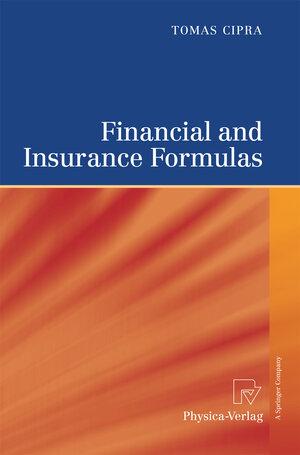
×
![Buchcover ISBN 9783790829013]()
From the reviews:
“As the book title says, it is mainly about mathematical formulas used in finance and insurance … . this is an easy-to-use, well-structured all-in-one survey, which is a must have for professionals practicing in finance and insurance areas, who have no time to sift through piles of information in order to get a necessary formula. Though it can not be viewed as a textbook, it is also highly recommended to students and teachers in applied mathematics.” (Georgiy Shevchenko, Zentralblatt MATH, Vol. 1200, 2011)Financial and Insurance Formulas
von Tomas CipraFinancial and insurance calculations become more and more frequent and helpful for many users not only in their profession life but sometimes even in their personal life. Therefore a survey of formulas of ? nancial and insurance mathematics that can be applied to such calculations seems to be a suitable aid. In some cases one should use instead of the term formula more suitable terms of the type method, p- cedure or algorithm since the corresponding calculations cannot be simply summed up to a single expression, and a verbal description without introducing complicated symbols is more appropriate. The survey has the following ambitions: • The formulas should be applicable in practice: it has motivated their choice for this survey ? rst and foremost. On the other hand it is obvious that by time one puts to use in practice seemingly very abstract formulas of higher mathematics, e. g. when pricing ? nancial derivatives, evaluating ? nancial risks, applying accou- ing principles based on fair values, choosing alternative risk transfers ARL in insurance, and the like. • The formulas should be error-free (though such a goal is not achievable in full) since in the ? nancial and insurance framework one publishes sometimes in a h- tic way various untried formulas and methods that may be incorrect. Of course, the formulas are introduced here without proofs because their derivation is not the task of this survey.



